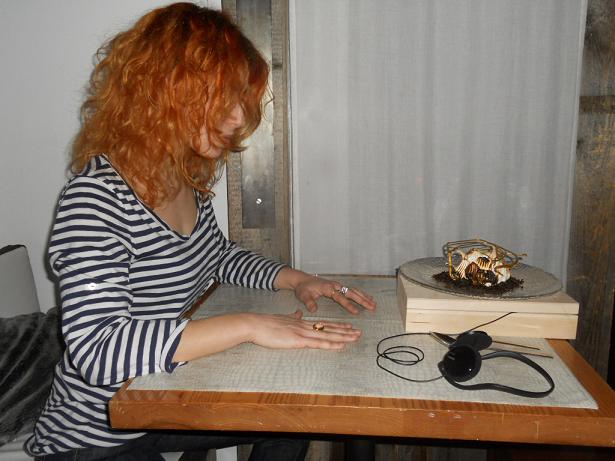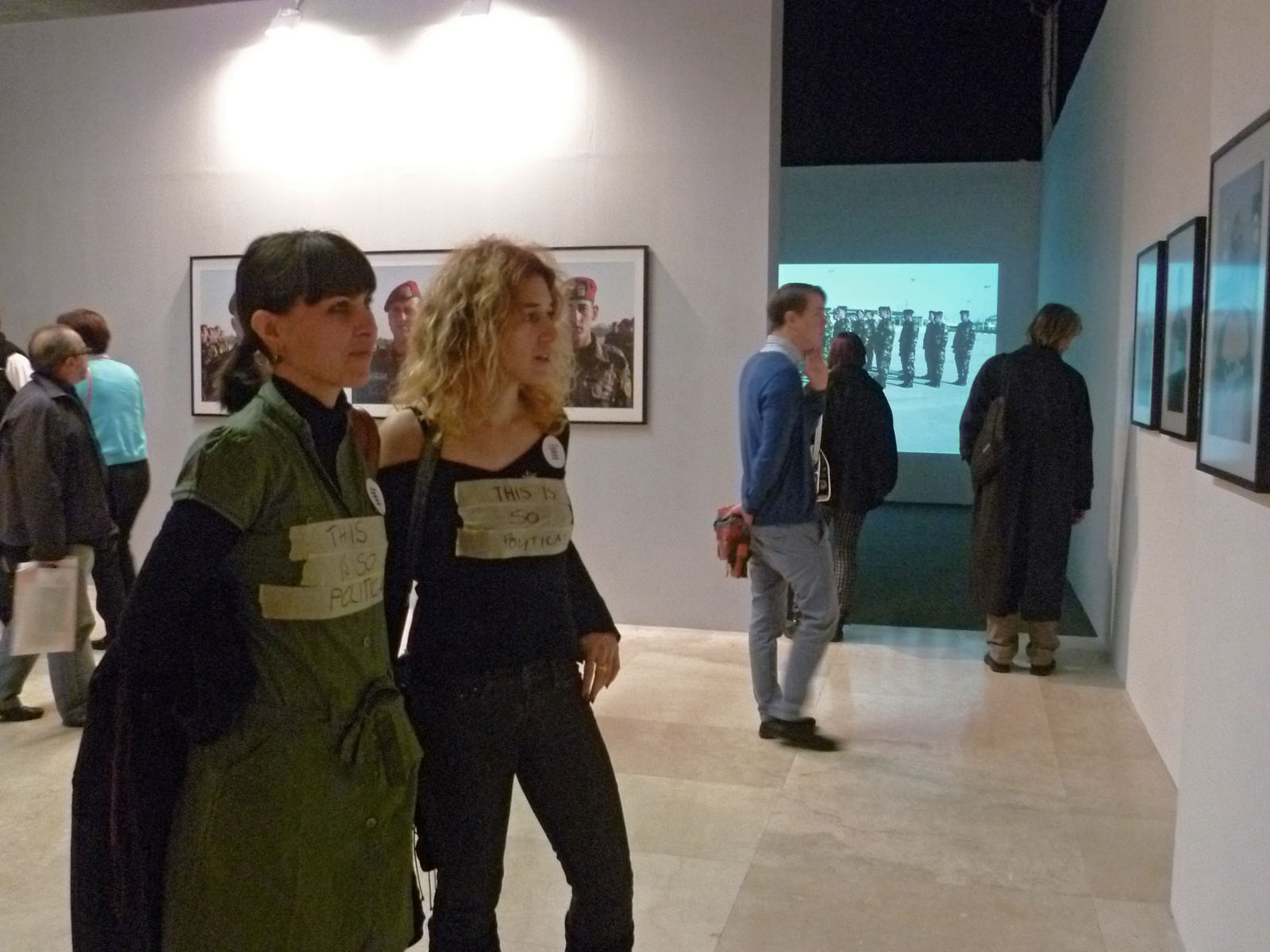Interview with Aneta Stojnić About the Interdisciplinarity of the Arts
 Nikola Dedić/ARTMargins Online: You came originally from the world of theater. Recently you have mostly worked in the field of visual arts. Why?
Nikola Dedić/ARTMargins Online: You came originally from the world of theater. Recently you have mostly worked in the field of visual arts. Why?
Aneta Stojni?: I would not say that I’m working specifically in the field of visual arts, but rather that my work is in the field of performance art. On the other hand, I did move away from theater (in the classical understanding of the discipline) at a certain point because it became too hermetic and self-referential for my practice.
Maybe someone could say that performance art is closer to the visual arts field, but I don’t really see it as such; and if I had to, I would rather characterize it as interdisciplinary. Nowadays, the question of media seems to be inappropriate. I will choose to use one medium or another in accordance with what is most suitable for that particular project.
In fact, I would say that the matter of discipline is more relevant to the institutions than to the artists themselves. What do I mean when I say that? For example, I was in a situation to perform the same piece in a gallery and in a theater venue. And the piece had very different receptions and perceptions in both venues. In a way, I could say that the context– the venue – triggered different expectations in the audience. So, to reread your question in relation to what I just said, I would agree that I am more present in the so-called visual art and/or contemporary dance scene than in the theater.
ND/AMO: How do you see the relation between theoretical and artistic work in your own experience and in relation to the local scene?

AS: Personally, I am interested in researching how the relations between art, culture, society and politics are established; specifically the relation between art and theory, which is so crucial to my work. Today, art theory and practice are strongly intertwined, for the benefit of both “disciplines;” the notion of “theoretical practice” appears particularly important. Artists can even use theory as their artistic material. For instance, in a lecture performance–a relatively young performing “genre” that derives from the shared space of theory and practice–lecture and performance practices cause both the role of the artist and role of the theorist/lecturer to be questioned, which often questions the eligibility of one over the other.
In other words, the traditional academic division between art as practice and art as theory is outdated. Unfortunately, with the exception of the Interdisciplinary Studies department at the Belgrade University of Arts, in the local academic context, there is still a very strong resistance towards the theoretical discourse in the arts; theory is almost completely neglected in the education of artists and is treated as something unnecessary, irrelevant, and separate from their artistic practice. Luckily, in the independent art scene both in Serbia and in the region, we notice a very strong, vivid and progressive theoretical scene, especially in collectives gathered around magazines such as Prelom and TkH in Belgrade; Frakcija in Zagreb; and Maska and Reartikulacija in Slovenia (to mention only a few).
reloaded_2011_tanzquartier%20wien,%20performance.jpg) ND/AMO: How do you see the political potential of performing arts in a transitional society?
ND/AMO: How do you see the political potential of performing arts in a transitional society?
AS: A transitional society is a society that is going through turbo-capitalism, with its brutal and vulgarly obvious mechanisms that lead to dramatic social stratifications. Simultaneously, in Serbia we are confronted with the introduction of liberal capitalism into art and cultural institutions, as well as the promotion of neo-liberalist cultural policies that stimulate self-sustainability in the arts and in culture, both of which are to be regulated by the laws of the free market. These cultural policies could lead to a situation where we would have commercial (self-sustainable) programs on one side, and conservative government-led institutions, on the other. In this situation, the space for independent actors whosee their work as a public good with symbolic value is limited, marginalized and suppressed, and the actors on the independent scene are continuously put into a precarious situation.
To get back to your question, though, I believe that the arts do have the potential to make a political impact on social reality in many different ways. In relation to performance art, one aspect that interests me as a form of opposition to the commodification of art and culture is the notion of immaterial practice. Performance art gives up on the production of an object/artifact that will “stand for the future.” Instead, performance art chooses to focus on interventions in the contemporary reality of social relations. However, we shall not get too Romantic about this idea, as it is evident that this kind of immaterial practice is also producing something, and is subject to appropriation by capitalism and its assimilation into the art world. Still, this shall not discourage us, as the answer lies in the permanent change of strategies and in the development of new methods and procedures. We need to focus on the effectiveness of the performance/action/intervention and its impact on society at the time when it is taking place.
[su_menu name=”Serbia Focus”]




